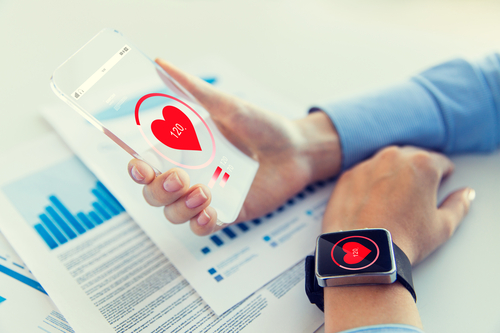Wearable technology is about to disrupt the industry. Unsurprisingly, smartwatches and wearable medical devices help people monitor their health 24/7, and their impact could increase if doctors trust their utility and people feel their data is secure. Deloitte Global predicts that 320 million consumer health and wellness wearable devices will ship worldwide in 2022. By 2024, that figure will likely reach nearly 400 million units as new offerings hit the market and more healthcare providers become comfortable with using them.

Deloitte Insight | deloitte.com/insights
According to Deloitte’s Connectivity and Mobile Trends, the latest survey found that 39% of respondents owned a smartwatch. The device’s common uses have historically been to help people get fit, lose weight, and beat their personal best in their net race. But increasingly, people are using smartwatches to monitor their health, not just their running pace, as new hardware, software, and apps have turned them into personalized health clinics. Heart rate monitors are now standard on most smartwatches, and some have FDA approval for detecting abnormalities such as atrial fibrillation, a major cause of stroke. As these devices get more sophisticated, the percentage of consumers using them to manage chronic conditions and detect symptoms of serious diseases will likely increase.

Deloitte Insight | deloitte.com/insights
According to Statista’s Consumer Electronics report, wearables used in North America and the Asia Pacific are together forecast to account for around 70% of the connected wearables worldwide in 2022. Ownership of wearables in Asia-Pacific (APAC) regions is already high among those living in China, Thailand, and Vietnam. These regional trends mirror global market developments that forecast wearables shipments to reach more than 300 million by 2023.

Number of connected wearable devices worldwide by region 2015-2022 © Statista 2022
Medical device companies across the globe are contemplating entering the APAC market to expand their business. APAC is home to seven of the world’s ten most populous countries and over 60% of the global population. The sheer magnitude of the people, coupled with strong economic indicators, means that the healthcare market in the region is forecast to grow tremendously in the future.

The changing landscape of the medical devices industry in the APAC region, KPMG
The growth in healthcare spending in APAC has been outpacing the growth in GDP. Much of the increase in Malaysia’s and Thailand’s healthcare expenditure stems from healthcare inflation coupled with continued expansion in the central government’s budget allocation to the health ministry. Despite the government’s recent efforts in India, out-of-pocket expenses remain high, with patients spending almost double what the government spends on them.

The changing landscape of the medical devices industry in the APAC region, KPMG
The domestic medical device market in Thailand is forecasted to be worth USD 2 billion in 2020, with a CAGR of 7.5% between 2018 and 2022, according to a report published by KPMG based on figures sourced from Fitch Solutions reports. Home to over 500 medical device manufacturers (SMEs and multinational corporations), Thailand is in fierce competition with Singapore and Malaysia to become the health service hub in ASEAN. Moreover, healthcare spending in Thailand is expected to reach USD 24.6 billion in 2023, representing 4.0% of GDP with a CAGR of 5.4% between 2014 and 2023.

The changing landscape of the medical devices industry in the APAC region, KPMG
Article by: ASST.PROF. SUWAN JUNTIWASARAKIJ, PH.D.

